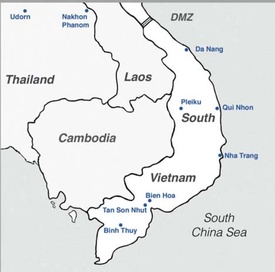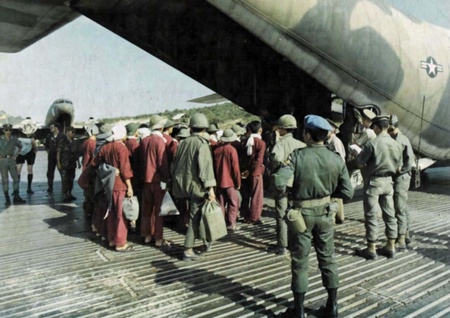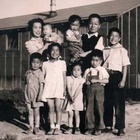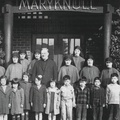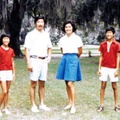Did you ever receive a can of Rice Krispies for Christmas? Or, did you ever think of giving a large gallon can of Rice Krispies for Christmas? Well, I did. I received a gallon can of Rice Krispies for Christmas while I was in Vietnam. In a combat zone, of all places!
One of the many assignments I received while in the military was to serve a tour of duty in South Vietnam. It was an assignment that many of us who were qualified as air crew members were expected to serve; so it was not surprising, when I received my orders in the early 1970s. Those of us who were assigned at that time were based in Saigon (today’s Ho Chi Minh City), but spent virtually all of our time on Tan Son Nhat Air Base, near the city center. It was relatively late in the war. Our missions were flown to provide resupply support “in-country,” a term used by the military to define Vietnam.
These missions were flown at all times of the day. They didn’t have a discernable sequence, so we simply looked up our names to find out when our next mission was. It could be anytime of the day, so we lived a rather jumbled lifestyle that didn’t amount to a very sedate life. With no family around in a combat operation, I didn’t find it unusual. As a career officer in the military, there had been previous times when world problems arose that involved the United States; so, this type of operation was quite common and, in fact, expected.
Our missions during this period took us around South Vietnam on resupply missions to various military camps such as Ban My Thuot in the central highlands, Da Nang up north, Saigon in the south, and about half a dozen or more small airfields in between. It was a routine mission which we flew regularly. It was rather boring, except for thanking my good fortune to be flying, instead of being in the middle of firefights down below on the ground.
However, we did have our periods of “tightened behinds, teeth and other body parts” that helped to provide us with reminders that we were in a “combat zone.” Most of the time, it was when we were in one of the forward bases and we’d be notified of “incomings,” which were close-by explosions that were artillery aimed at our aircraft while in the process of unloading cargo.
However, we were always poised for “max departure” take-offs with idling engines, parked at the end of the runway, cargo in the aircraft on rollers, so that offloads were expeditious. The couple of times I remember we were notified of “incomings” involved a quick discussion with the loadmaster, followed by maximum power on the engines. We started our take-off roll with the cargo simply rolling off our plane as we headed down the runway. The cargo simply spread out along the runway!
What kinds of cargo did we carry? Obviously, food, ammunition, and other worldly needs that military combat personnel needed. It included American combat personnel as well.
The strangest bit of cargo that we transported from one of the outposts “in-country” was when we flew a cadre of… women “prisoners of war.” I wondered what kind of women were classified as combat “POWs,” so I took a look from the flight deck. I found that they looked exactly like all the Vietnamese women whom I’d become familiar with in and around our military base in Saigon! But, what had I expected? I’m not sure. So, we simply headed back to our headquarters at Saigon with this unusual load of women POWs.
The loadmaster later informed us that the North Vietnamese women prisoners were initially frightened and clung to each other. Some closed their eyes and seemed on the verge of crying. But as the flight proceeded, they became totally excited and started gazing out the window and chatting among themselves in total bewilderment. They had never flown in an aircraft before, so it was quite an experience for them.
Later, on one particular day, I was assigned to fly a night mission and prepared as usual. Since I was somewhat early, I decided to open some of my Christmas gifts even though it was a few days prior. There were no kids around so why wait until Christmas? A big round gift looked inviting, so I proceeded to open it.
It was a large gallon-sized can with a taped top. On cutting through the tape and opening the lid, lo and behold, it was a can of Rice Krispies from my sister-in-law in Hawaii. Rice Krispies? Oh well. I could probably have it for a snack someday when I didn’t feel like getting breakfast at the flight kitchen. So, I set it aside and opened a couple other packages.
Several weeks later, I was scheduled to fly a day mission, but didn’t feel like heading to the flight kitchen to have breakfast, so I turned to my can of Rice Krispies. I guessed that sister-in-law had had the foresight to help me with a personal supply of Rice Krispies, just in case I was about to miss breakfast.
So, I proceeded to pour out the contents of the can, and guess what came out? My favorite sugar cookies that she had baked for me! The Rice Krispies kept them all intact, and not one of the cookies was broken. What a sweet surprise! Rice Krispies and sugar cookies from Hawaii for breakfast… before a combat mission!
© 2023 Shokichi "Shox" Tokita


